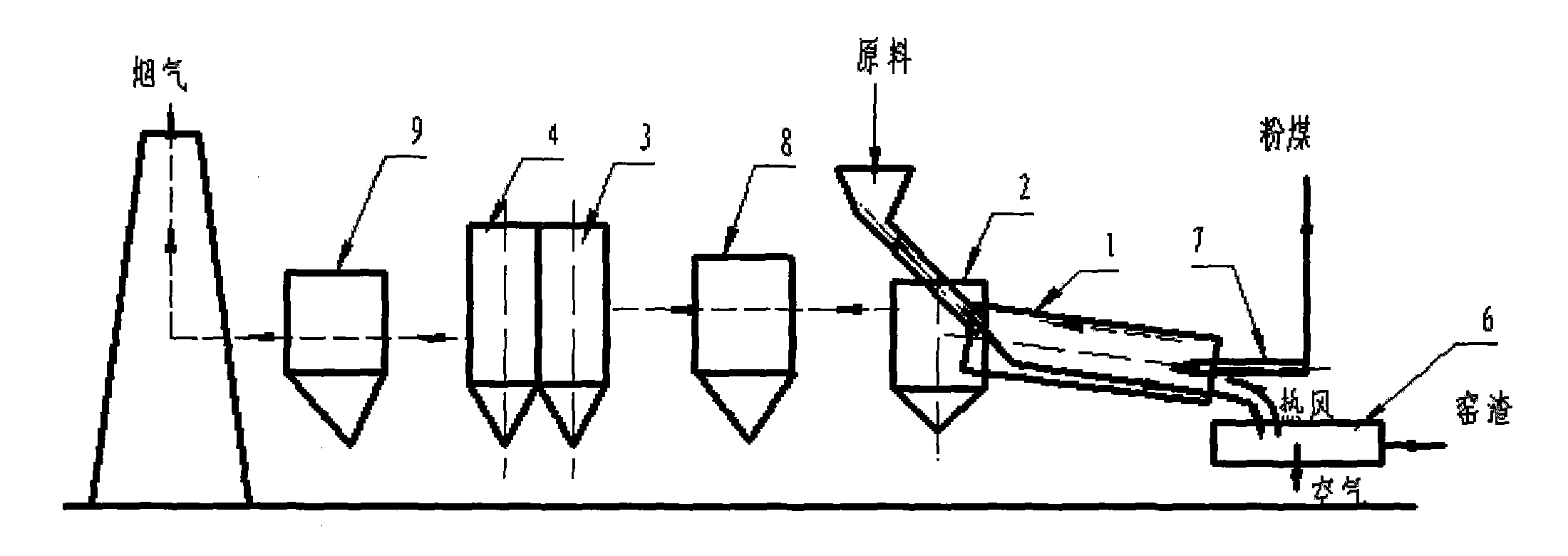Method for recycling and handling low lead zinic waste residue
A treatment method and waste residue technology, applied in the direction of improving process efficiency, etc., can solve the problems of product quality reduction, product quality decline, and failure to achieve cement mixture, and achieve the effect of improving temperature control ability and processing ability
- Summary
- Abstract
- Description
- Claims
- Application Information
AI Technical Summary
Problems solved by technology
Method used
Image
Examples
Embodiment Construction
[0015] The specific implementation manners of the present invention will be further described in detail below in conjunction with the accompanying drawings and embodiments. The following examples are used to illustrate the present invention, but are not intended to limit the scope of the present invention.
[0016] figure 1 It is the recycling and processing method of low-lead-zinc waste slag of the present invention. It adopts the rotary kiln fuming method to recycle and process the low-lead-zinc waste slag. The size of the rotary kiln is φ3×40m. The flue gas channel between the settling chamber and the cooler is equipped with a multi-cylinder cyclone dust collector with a separation capacity of 1-80 microns, which can separate waste residue and fly ash, and finally can be separated from the flue gas. At the same time, an NHSB-200W pulverized coal burner is inserted at the kiln head of the rotary kiln, and the pulverized coal particle size injected into the pulverized coal ...
PUM
 Login to View More
Login to View More Abstract
Description
Claims
Application Information
 Login to View More
Login to View More - R&D
- Intellectual Property
- Life Sciences
- Materials
- Tech Scout
- Unparalleled Data Quality
- Higher Quality Content
- 60% Fewer Hallucinations
Browse by: Latest US Patents, China's latest patents, Technical Efficacy Thesaurus, Application Domain, Technology Topic, Popular Technical Reports.
© 2025 PatSnap. All rights reserved.Legal|Privacy policy|Modern Slavery Act Transparency Statement|Sitemap|About US| Contact US: help@patsnap.com



